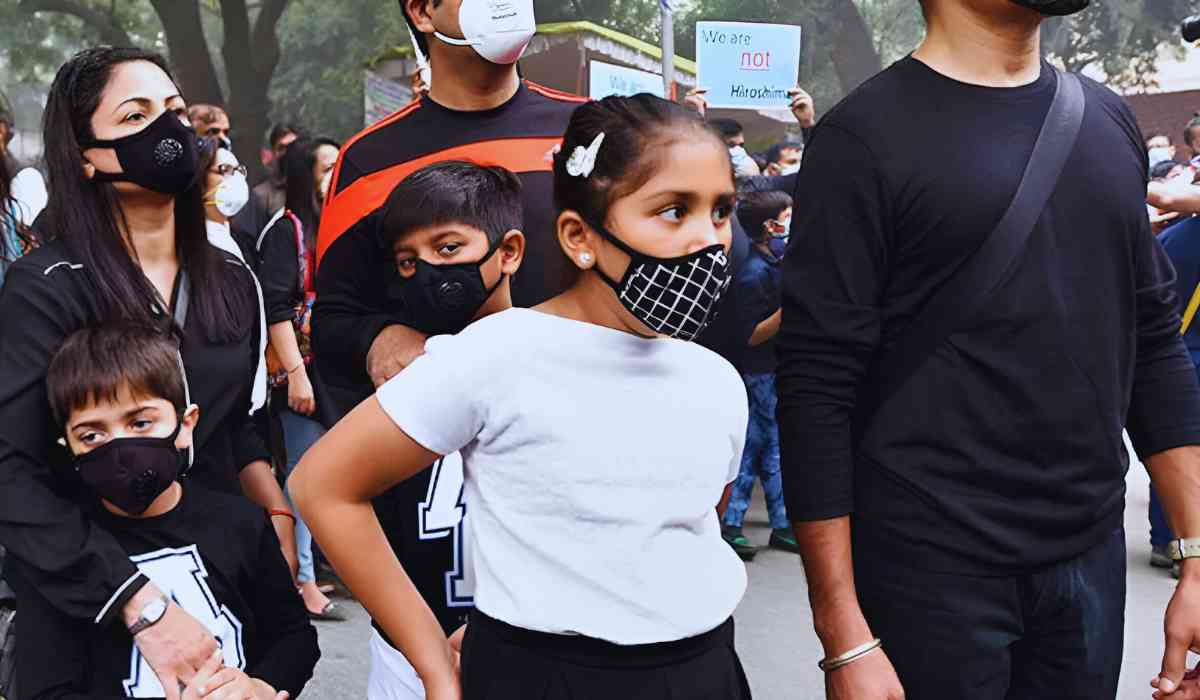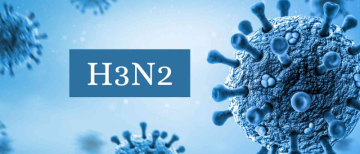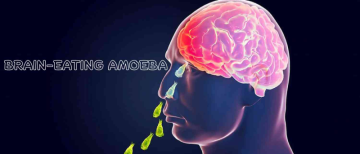Walking is one of the best physical activities for staying healthy. However, for Delhiites, this innocuous activity has become a health hazard. You read it right. According to the latest study by Ahmedabad's Physical Research Laboratory and Delhi Technological University (DTU), pedestrians in the capital are exposed to millions of nanoparticles that stick deep into the lungs, posing severe health risks. Moreover, the nearer you are to traffic, the more the chances of inhaling these particles. You may not even know that you're sucking in millions of harmful nanoparticles daily! What can be done to mitigate their impact?
What Does the Study Reveal About Delhi's Nanoparticle Pollution?
The latest research by the Physical Research Laboratory in Ahmedabad and DTU shows that pedestrians in Delhi inhale up to 18 million nanoparticles every day while walking. Typical nanoparticles are partially burned hydrocarbons, like that in soot, ceria, from vehicle exhaust catalysts, metallic dust from brake linings, and calcium carbonate in the lubricating oils for engines.
Further, the study indicated that the level of PM1 and smaller nanoparticles is 30% higher in areas near the road than those away from it. So, people who work or reside near the road are more vulnerable to these toxic PM1 concentrations. Police, street vendors, car drivers, motorcyclists, delivery persons and urban poor near the road are all at a high risk of inhaling nanoparticles in huge quantities daily.
PM1 particles have been associated with health impacts, such as cardiovascular problems. The research revealed that ultrafine nanoparticles make up 60-8o% of particle concentration over Delhi, which are then inhaled by pedestrians in large numbers. This study was performed by noted scholars, including Rajeev Kumar Mishra, associate professor at DTU, S. Ramachandran, senior professor at Physical Research Laboratory, and Kanagaraj Rajagopal, research scholar at DTU.
They used a computerized model to analyze where the nanoparticles are deposited once inhaled. It was found that since these particles are 500 times smaller than human hair, they deposit deep into the alveolar region of the lungs. Besides the lungs, they can also deposit in the human brain. Not only that, but the nanoparticles can also creep into the bloodstream.
How Can Nanoparticle Emission Be Reduced?
The ability of nanoparticles to embed themselves in vital organs like the lungs and the human brain demands close scrutiny. It calls for a policy formulation to reduce their emission from engine sources. During the COVID period lockdown, when vehicle use on the road came down to 50%, the emissions were reduced.
But today, we are far ahead of that period and need to explore other evidence-based strategies to prevent human contact with dangerous nanoparticles. Swift measures need to be taken because wearing masks while walking is not an effective prevention against inhaling particulate matter.
Some Effective Strategies
To reduce the increased level of particulate matter, alternative fuels in internal combustion engines have been proposed.
Biodiesel is regarded as a great solution for the depletion of fossil fuel reserves. It also decreases the extreme levels of diesel exhaust emissions. Scholars like A.K Singh stated as early as 2021 that the combustion of biodiesel results in less CO and higher NOX emissions than mineral diesel. Further studies gave consent to this view and showed that the high oxygen in biodiesel improves the lowering of PM and gaseous emissions.
Another effective approach is using metal oxides like cerium oxide as a fuel additive. When this oxide is used in the nanoparticle form, it shows a high catalytic activity, which improves fuel efficiency and minimizes emissions.
The application of filters in both diesel and petrol engines also lowers PM emissions. Filter technologies according to the engine technology and application specifications should be effectively used to decrease particle emissions.
The study on nanoparticle pollution sheds light on a critical issue. If it isn't tackled on priority, there's a high chance that it will jeopardize the long-term health of perfectly healthy individuals belonging to various occupations. This, in turn, can lead to higher healthcare costs, reduced productivity, and long-term ecological consequences.
With inputs from agencies
Image Source: Multiple agencies
*The views expressed are personal to the author and do not reflect the platform's opinion of the same.
© Copyright 2024. All Rights Reserved Powered by Vygr Media
Author’s Profile
Praggya Joshi is a seasoned content writer specializing in creative writing, long-form, and short-form social media content. She has worked in the B2B, SaaS, health, and IT spheres and carries a deep knowledge of building SEO-optimized and user-friendly content strategies. A poet at heart, she finds solace in weaving her thoughts and life experiences into free-flowing verses. Praggya is devoted to honing her craft and tries her best to move past her comfort zone and gain new skills.






















